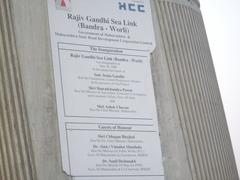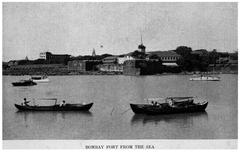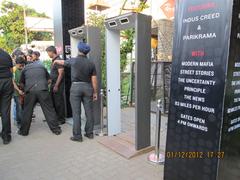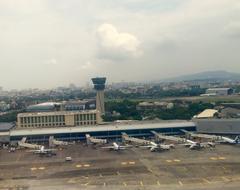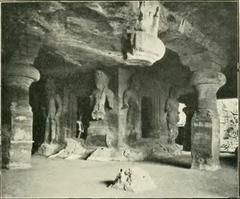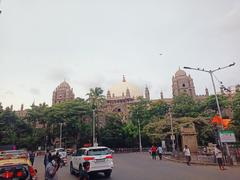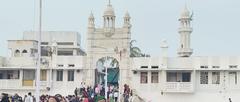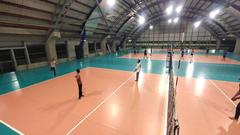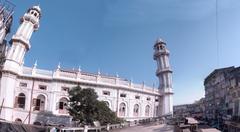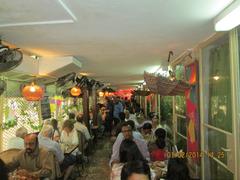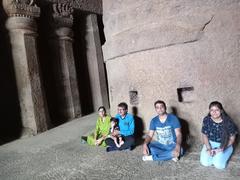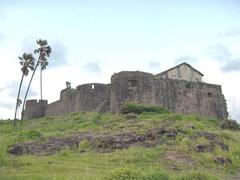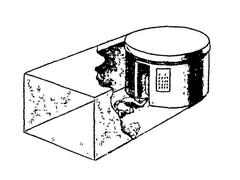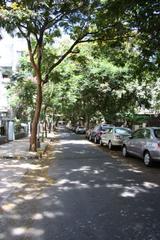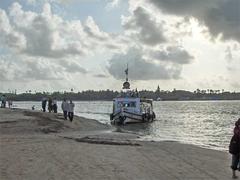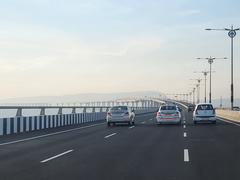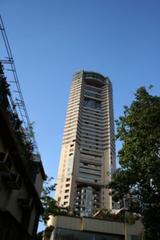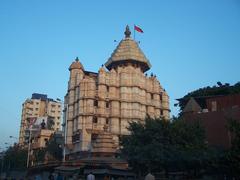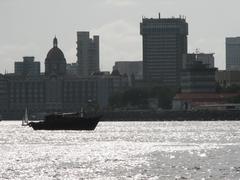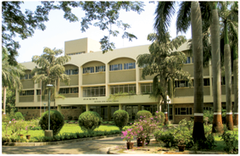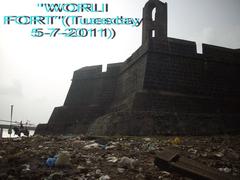Mumbai Coastal Road: Visiting Hours, Tickets, and In-Depth Travel Guide
Date: 15/06/2025
Introduction
The Mumbai Coastal Road, officially known as the Chhatrapati Sambhaji Maharaj Coastal Motorway, is a transformative urban infrastructure project that redefines Mumbai’s western seafront. Stretching 29.2 km from Marine Drive in South Mumbai to Kandivali in the north, the expressway blends cutting-edge engineering, ecological sensitivity, and cultural heritage. This guide provides comprehensive information on the Coastal Road’s history, significance, visiting tips, accessibility, and future developments, ensuring residents and travelers experience Mumbai’s newest urban marvel at its fullest.
Table of Contents
- Introduction
- Historical Evolution and Project Vision
- Route, Design, and Engineering Features
- Environmental and Social Impact
- Economic and Urban Significance
- Practical Visitor Information
- Key Attractions and Cultural Experiences
- Future Developments and Connectivity
- Frequently Asked Questions (FAQ)
- Summary and Recommendations
- References
Historical Evolution and Project Vision
Early Coastal Development and Marine Drive Legacy
Mumbai’s relationship with its coastline has shaped its urban identity for over a century. The construction of Marine Drive in the 1920s, through ambitious land reclamation, established a precedent for integrating scenic roadways with the waterfront (Tripzygo). Known as the “Queen’s Necklace” for its glittering arc of streetlights, Marine Drive became a symbol of Mumbai’s cosmopolitan spirit and Art Deco heritage (Treebo).
The success of Marine Drive inspired urban planners to envision further coastal infrastructure to accommodate Mumbai’s growing population and limited inland expansion options. By the late 20th century, the concept of a high-capacity coastal expressway gained momentum as a solution to chronic traffic congestion.
Genesis of the Mumbai Coastal Road Project
Serious deliberations on a dedicated coastal corridor began in the 1990s, with chronic congestion on Mumbai’s arterial roads and peninsular geography limiting inland expansion. After extensive feasibility studies and environmental assessments, the Mumbai Coastal Road Project was approved in the 2010s as a transformative effort to alleviate traffic, enhance connectivity, and enrich Mumbai’s public spaces (Mid-Day).
Route, Design, and Engineering Features
Route and Structure
The expressway spans 29.2 km, connecting Marine Drive in the south to Kandivali in the north. It runs parallel to the Arabian Sea, offering breathtaking views and direct connectivity between the city center and suburbs (SquareFeatIndia). Key access points include Marine Drive, Bandra-Worli Sea Link, and multiple interchanges.
Design and Key Engineering Features
- Eight-Lane Expressway: Six lanes for general traffic and two Bus Rapid Transit (BRT) lanes (CN Traveller).
- Undersea Tunnels: Two earthquake-resistant tunnels beneath Girgaum Chowpatty and Malabar Hill, each over 3 km long, equipped with emergency cross-tunnels.
- Land Reclamation: About 90 hectares reclaimed—22% for the road, 78% for public amenities like parks and promenades.
- Integration: Seamless connectivity with the Bandra-Worli Sea Link, Marine Drive, and other city arteries.
Phased Implementation
- Phase 1: Marine Drive to Bandra-Worli Sea Link (10.5 km), featuring tunnels and elevated stretches, costed at ₹12,700 crore. Nearing completion as of June 2025.
- Phase 2: Bandra to Kandivali, extending the corridor to 29.2 km with additional interchanges and amenities (SquareFeatIndia).
Environmental and Social Impact
Ecological Measures
The project faced scrutiny over potential impacts on mangroves, intertidal habitats, and marine biodiversity. Measures include:
- Mangrove Transplantation: Preserving and relocating mangroves to protect natural habitats.
- Artificial Reefs and Monitoring: Supporting marine life and minimizing coastal erosion (CN Traveller).
- Green Spaces: Over 70% of reclaimed land dedicated to parks and gardens.
Social and Heritage Considerations
- Heritage Preservation: Maintaining Marine Drive’s Art Deco skyline and balancing modernization with cultural legacy (Hindustan Times).
- Community Engagement: The project responds to public feedback and strives to enhance open spaces in a city with limited per capita green areas.
Economic and Urban Significance
- Traffic Decongestion: Reduces south-north travel time from over two hours to 40 minutes, benefiting an estimated 130,000 vehicles daily (Mid-Day).
- Fuel and Emission Savings: Smoother flow cuts fuel use by 34%, improving air quality (CN Traveller).
- Urban Renewal: Revitalizes western suburbs, boosts real estate values, and stimulates business growth (SquareFeatIndia).
Practical Visitor Information
Visiting Hours and Tickets
- Visiting Hours: Promenades and public spaces are open daily from 5:00 AM to 10:00 PM. The expressway operates 24/7 for vehicles (Wikipedia).
- Tickets: Entry to promenades, beaches, and most landmarks is free. Toll charges apply for vehicles on the Bandra-Worli Sea Link and, in the future, on certain Coastal Road sections.
Access Points and Navigation
- Key Entry Points: Marine Drive, Bandra-Worli Sea Link, and (upon completion) interchanges up to Kandivali.
- Pedestrian and Cyclist Access: Dedicated promenades and cycling tracks along much of the route (CN Traveller).
- Navigation: Signage and digital maps assist in route planning.
Safety and Accessibility
- Accessibility: Promenades are wheelchair-friendly with wide walkways and ramps (Wikipedia).
- Regulations: Two-wheelers and heavy vehicles are restricted. CCTV and security patrols enhance safety.
- Health Guidelines: Follow local advisories and COVID-19 protocols (Travel Like a Boss).
Key Attractions and Cultural Experiences
Iconic Landmarks
- Marine Drive: UNESCO-listed Art Deco buildings, panoramic sea views, and the “Queen’s Necklace” effect after dark (maharashtratourism.gov.in).
- Bandra-Worli Sea Link: Engineering marvel connecting the Coastal Road’s southern section (mapsofindia.com).
- Girgaum Chowpatty: Vibrant public beach, especially lively during Ganesh Chaturthi (timesofindia.indiatimes.com).
- Haji Ali Dargah: Historic religious site accessible at low tide (secretmumbai.com).
Promenades and Beaches
- Coastal Road Promenade: Landscaped gardens and sea views, open from 6 AM–9 PM (timesnownews.com).
- Juhu and Versova Beaches: Accessible via the Coastal Road, known for street food and local culture (timesofindia.indiatimes.com).
Cultural and Culinary Experiences
- Street Food: Try vada pav, bhel puri, and more along Chowpatty and Colaba Causeway.
- Nita Mukesh Ambani Cultural Centre (NMACC): Hosts art exhibitions and performances near the coastal corridor (secretmumbai.com).
Future Developments and Connectivity
Ongoing and Planned Extensions
- Phase 2 & Versova–Virar Sea Link: The Coastal Road will extend to Kandivali and eventually connect with the Versova-Virar Sea Link, integrating with the broader Mumbai ring road vision (Wikipedia, InfraInfoHub).
- Urban Redevelopment: New promenades, parks, and public spaces, with careful attention to heritage regulations (Hindustan Times).
- Smart Infrastructure: Incorporates digital tolling and real-time traffic management (mapsofindia.com).
Frequently Asked Questions (FAQ)
Q: What are the Mumbai Coastal Road visiting hours?
A: Promenades and beaches are open from 5–6 AM to 9–10 PM. The expressway operates 24/7 for vehicles.
Q: Are tickets required for the Coastal Road or its attractions?
A: Most public spaces are free. Toll fees apply for vehicles on the Sea Link and (in the future) some Coastal Road sections.
Q: Is the Coastal Road wheelchair accessible?
A: Yes, promenades and public spaces include ramps and wide walkways.
Q: Can visitors take guided tours?
A: Local operators offer walking, cycling, and festival tours.
Q: What is the best time to visit?
A: November–February for pleasant weather; monsoon for dramatic sea views but possible restrictions.
Q: Are there any environmental restrictions or guidelines?
A: Visitors are encouraged to avoid littering, support conservation, and follow local environmental guidelines.
Summary and Recommendations
The Mumbai Coastal Road Project is a landmark in urban infrastructure, merging technological innovation with environmental stewardship and cultural legacy. By slashing commute times and adding parks, promenades, and cycling tracks, it improves quality of life and visitor experience (Mid-Day, CN Traveller). Its thoughtful design ensures accessibility, safety, and sustainability, while future extensions will further enhance Mumbai’s connectivity (SquareFeatIndia, Wikipedia). Whether you are a local commuter or a curious traveler, the Mumbai Coastal Road offers a remarkable journey through the city’s evolving landscape.
Visitor Tips:
- Visit early morning or evening for the best experience.
- Use promenades and cycling tracks for recreation.
- Explore nearby landmarks, enjoy local cuisine, and respect environmental guidelines.
- Download the Audiala app for real-time updates and curated guides.
References
- Mid-Day: Mumbai Coastal Road Project
- SquareFeatIndia: Major Milestone
- Wikipedia: Coastal Road (Mumbai)
- Tripzygo: Marine Drive Mumbai
- Treebo: Marine Drive
- CN Traveller: 8 Things You Need to Know
- Hindustan Times: Marine Drive Reimagined
- InfraInfoHub: Mumbai’s 6 Mega Road Projects
- Travel Like a Boss: Is It Safe to Travel Mumbai Now?
- MensXP: Best Places to Visit in Mumbai
- maharashtratourism.gov.in: Mumbai City
- mapsofindia.com: North Channel Bridge
- timesofindia.indiatimes.com: Mumbai’s Stunning Shoreline
- secretmumbai.com: Mumbai Tourist Attractions
- timesnownews.com: Mumbai Coastal Road Work
